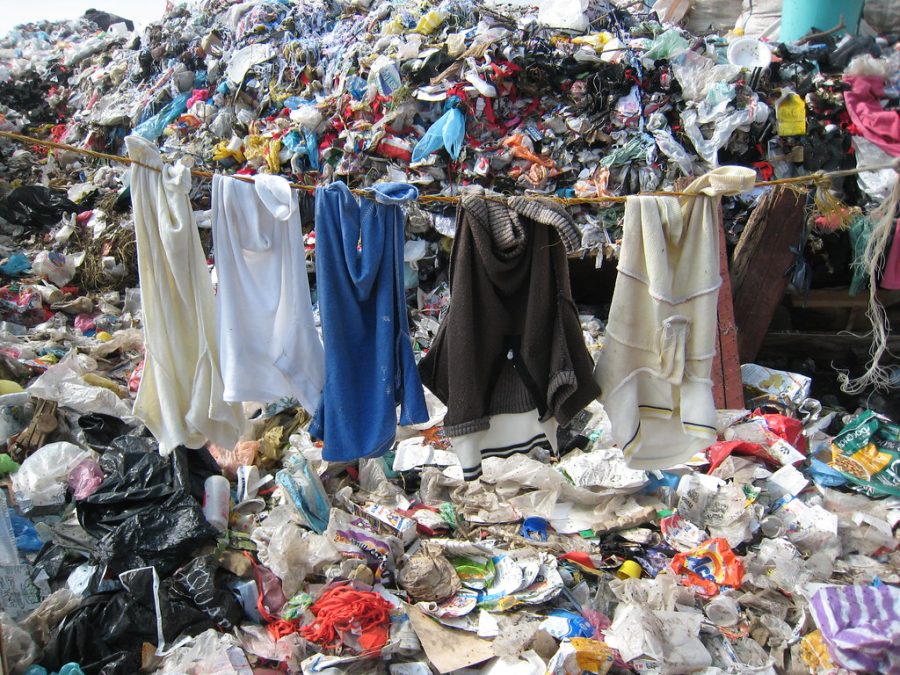Fast Fashion and How it Affects The Enviornment
October 28, 2021
Fast fashion is one of the most common ways of shipping and creating clothing. Despite not being a well-known practice, many popular brands use this process. Fast fashion is extremely harmful to the environment and contributes to global warming and pollution, thus, brands that perpetuate this practice should not be supported.
In fast fashion, materials and items are shipped overseas for cheap labor and as a way to avoid high minimum wages. The reason this process is harmful is that in order for a clothing company to create dyed materials for colored clothing, it requires toxic chemicals that will end up in the ocean afterward which can harm sea life. Humans can experience repercussions as well if the toxic chemicals are able to get to the shore or near local beach spots. In addition, 50% of clothing ends up in landfills afterward, accumulating waste. Once it’s full, everything in the landfill is incinerated. The items being incinerated catalyze the release of harmful chemicals into the air, harming nearby neighborhoods and environments. Fast fashion also uses something called viscose — a cellulosic fiber made from wood pulp. There is carbon disulfide in it which can lead to greater greenhouse gas emissions, further contributing to global warming.
Fast fashion has received more social media attention lately following the backlash against the popular online store SHEIN, a fast-fashion brand. This online store has some of the latest fashion trends all for affordable prices. Most of these clothes range from five dollars to 28 dollars per piece. Other popular stores such as Abercrombie & Fitch, American Eagle, Hot Topic, and Urban Outfitters also use fast fashion. Because of their extreme popularity, they can contribute to human rights abuse and labor trafficking
How this process and way of distributing items can contribute to human rights abuse and labor trafficking is that some brands use children to help package and ship out these materials. They make them work against their will as well as overwork them. That means that these companies are using child labor which is human rights abuse. Labor trafficking is known as modern-day slavery and fast fashion uses this by overworking their workers and not paying them as well. Some companies use sweatshops which are basically factories where many people work and create materials, clothes, or packages. Companies use these and hire many people to work in them and pay them as little as 2 dollars for working. These are where most of the labor trafficking is contributed by fast fashion.
Human rights abuse and labor trafficking are repercussions that are perpetuated by supporting businesses that use fast fashion. These brands will overwork their workers and pay them 1-10 dollars. Smaller brands that use their own shipping like small businesses on Etsy, Depop, etc. Other large brands such as Kotn, Levis, thredUP, Polo Ralph Lauren, and small businesses may be a sustainable alternative. Research different clothing brands and see if they have been known to use fast fashion.




